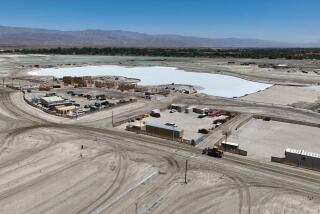
It’s quiet in Cayucos. Perhaps too quiet.
In fact, on a cloudy fall day on the beach in Cayucos, you might not find any Cayucans at all. You’ll find fishermen from Fresno and a few families vacationing from Visalia and Bakersfield. You’ll find a pair of European road-trippers scouring the sand with metal detectors and a handful of part-time workers commuting from Morro Bay and Los Osos.
But these days, Cayucos locals are few and far between.

The charming gem along the Central Coast calls itself “the last of the California beach towns,” and it might be right. As cities get bigger and denser up and down the coast, Cayucos has been seemingly preserved in formaldehyde for the last few decades — floating in limbo with virtually zero new development and a population hovering under 3,000.
But short-term rentals and skyrocketing home prices are rattling the community’s identity, sending longtime locals packing in favor of Airbnb guests. The shift has been so severe that some residents no longer recognize the city where they’ve spent their entire lives.
In a recent op-ed, resident Dell Franklin called the town a “lonely, empty place, a preying ground for our wealthiest investors.” He wrote that homes sit empty for months or years, waiting for buyers or short-term renters, and the characters who once gave the place its personality have disappeared.
A ghost town.

Cayucos has always been quiet. For decades, it served as a place where wealthy farmers owned second homes to escape the heat in the summer. But there was always a sizable permanent population among them.
Franklin described a neighbor, 30 years ago, taking him to the ER to pass a kidney stone, and another doing the same 10 years ago when a retina detached.
“Small towns are notorious for community togetherness, for looking out and after one another, for running into each other and visiting, catching up, of knowing there is support,” he wrote.
“Empty houses do not do this.”

The town of roughly 2,500 has around 200 Airbnbs and 350 total rental licenses — a similar amount, if not more than, Central Coast neighbors with double or triple its population, including Cambria, Los Osos and Morro Bay. Those numbers don’t include the amount of illegal rentals operating without a license — of which there are many, according to Cayucos resident Toni LeGras.
LeGras owns Beachside Rentals, a vacation rental company based in Cayucos with roughly 50 properties throughout the Central Coast. She said the town is changing, but that’s not necessarily a bad thing.
“When I was growing up, it was all hippies smoking pot and drinking beer on the beach. They used to call it a drinking town with a surfing problem,” she said. “I don’t mind that it’s gotten cleaned up a little bit.”
Her great-grandparents bought their Cayucos home for a song in 1934. Now, there’s virtually nothing on the market for less than $1 million.

She said tourism has always been a vital part of the community, but rental companies like Airbnb have made it easier for people who don’t live locally to buy up homes in Cayucos and rent them out from across the country.
LeGras said building more homes, not banning rentals, is the key to keeping Cayucos’ spirit alive and keeping long-term rent prices reasonable.
She surveyed the owners of the properties she rents, asking what they’d do if they weren’t allowed to rent. Some said they’d sell, others said they’d rent it illegally. Most said they’d just live in it themselves.
Very few said they’d offer it to long-term renters.
“If you ban rentals, you might get 100 back on the market out of 300, but it still won’t be enough,” she said. “The only way to provide housing is to build more housing.”

There’s no shortage of space for more housing. The Central Coast is essentially a blank slate compared with Northern and Southern California, with rolling hills and vast stretches of open land.
Cayucos is a prime example of the region’s extremely conservative approach to new development along the ocean. The tiny community features small homes that huddle close to the water and a commercial stretch along the main road. There’s a cemetery on the eastern edge of town and a small mobile home park to the west.
Beyond that, in California’s constant flux, Cayucos is a time capsule. The main reason? The Cayucos Land Conservancy.
For a community-backed, volunteer-led initiative, the conservancy has been nothing short of prolific. It formed in the 1990s to stop a resort development that sought to bring 60 homes and a 250-room hotel to a 275-acre site on the western edge of town. The group convinced the California Coastal Commission to downgrade the zoning and disallow the project, and the site has since turned into a state park.
In the wake of the years-long battle, Cayucans branded themselves “the little town that could.”
“Communities talk about open space but almost never put their money where their mouth is,” said Greg Bettencourt, who serves on the CLC board. “It requires long-term thinking and long-term dedication.”

In the decades since, the conservancy has acquired hundreds of plots of land in attempts to create a pristine, undevelopable greenbelt surrounding Cayucos.
“We were lucky to be behind the curve,” Bettencourt said. “We saw the development that was happening up and down the coast in Ventura, Oxnard, Santa Cruz, Monterey. We saw our future and decided we didn’t like it.”
From a preservationist standpoint, it’s a staggering success. From a YIMBY standpoint, as rising rents force longtime residents to leave, it’s a roadblock in the way of developing more permanent housing.

“The bad news is that there’s less land to develop, leading to fewer houses,” he said. “We recognize that limited resources means higher prices, but developing around Cayucos won’t lead to lower prices, it’ll just create a different community.”
Bettencourt admits he misses the town’s former funkiness, as quirky 1980s homes are torn down in favor of neutral builds that appeal to potential renters.
“But the truth is, so far, we haven’t been able to develop our way into affordability — especially on the coast,” he said.
Though it may have lost some of its edge over the years, Cayucos’ charm still shines through. It’s small with no stoplights. It’s local with no chains. It’s quiet; the only sounds that ring through are crashing waves and the creaking hinges of a swing set on the beach.
An elderly couple share an ice cream cone on the central strip lined with colorful, Old West-style buildings. An out-of-town bachelor party strolls down the pier in coordinating outfits. “This guy is getting married,” one shirt says. “This guy is the father of the groom.” “This guy is the best man.”

Most are on vacation, but the handful of local businesses have come to rely on them.
“Ninety percent of our customers are tourists,” said Donna Codi, a part-time worker at Remember When antique store. “We survive because of the tourism.”
Karen Lewis, who runs a stall at a different antique store, Main Street Antiques, said said she gets a lot of her wares from Cayucos locals who pass away.
“The parents die, and their kids come and auction off all their stuff. Then they rent the house out on Airbnb,” Lewis, 67, said, noting that a new rental just replaced an apartment across the street from her store.
Lewis commutes from Los Osos, since she can’t afford to buy a place in Cayucos. She likes the business from tourists but always hopes they don’t upset the chill vibe by partying too hard.
“My husband has a joke: buy our stuff, then leave,” she said.
Cayucos home prices have mirrored most of California, doubling over the last decade or so with a significant spike during the pandemic. But the low supply has sent prices soaring to greater heights than for its Central Coast neighbors.
The median home price in Cayucos is $1.314 million, according to Zillow. That’s higher than Los Osos ($856,586), Morro Bay ($941,326) and Cambria ($1.006 million).
“I need desperate sellers,” said real estate agent Dale Kaiser, who has spent his entire 41-year career in Cayucos. “In normal areas, some sellers have to sell. But no one here ever wants to leave.”
Over the last half-century, Cayucos has shifted from agricultural wealth to white-collar wealth.
For most of the 1900s, Cayucos housed wealthy farmers from the San Joaquin Valley buying second homes on the coast to escape the valley heat. But starting in the 1980s, tech moguls from Silicon Valley started trickling farther down the coast, passing up Santa Cruz and Monterey in favor of Cayucos, where money goes a little further.

“I can’t blame them for coming. This is a magical place, and we’re on the 50-yard line between Silicon Valley and Hollywood,” Kaiser said. “But it’s difficult for locals to compete with the money that’s made in San Francisco or Los Angeles.”
Kaiser said he’s pro-conservancy but anti-short-term rental, since it absorbs the already dwindling long-term rental stock and squeezes out renters. As a result, the town is losing the local color and flavor that made it what it was.
“People are struggling to find a place to live, and meanwhile, houses are sitting empty,” he said. “It rubs salt in the wound.”
More to Read
Sign up for This Evening's Big Stories
Catch up on the day with the 7 biggest L.A. Times stories in your inbox every weekday evening.
You may occasionally receive promotional content from the Los Angeles Times.










